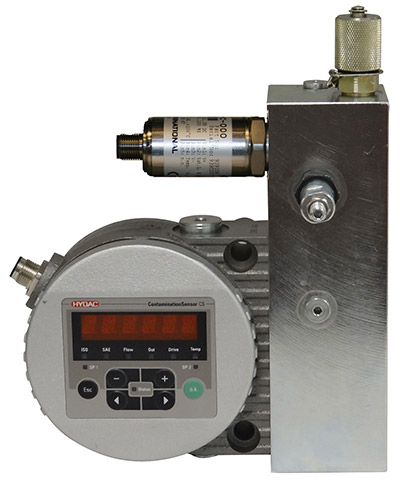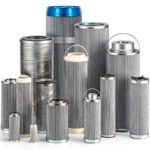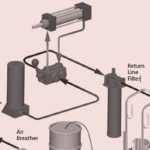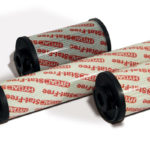Editor’s Note: This article was updated on August 1, 2023 with current standards and new imagery.
Beta Ratio refers to the efficiency in which a given filter element removes particles of a given size. The Beta Ratio is calculated using the ISO multi-pass test standard 16889:2022. The test involves adding particles of a known size to the test fluid until the fluid reaches a saturation point, and then bringing the filter online to remove particles in one pass through the element.

The testing equipment uses particle contamination measuring equipment to test the hydraulic fluid before and then after the filter element to compare the particles that existed upstream of the element to the particles remaining downstream of the element. The quotient of the number of particles of a given size is the beta ratio.
It’s important to consider a Beta Ratio is only valid for a given particle size. For example, if a filter element is rated for 5 micron or larger (also written as 5 µm), the Beta Ratio applies to that size particle alone. The Beta Ratio itself is calculated by taking dividing the number of upstream particles by downstream particles. For example, if 100,000 five micron particles were measured, on average, before the filter, and 100 five micron particles were measure after the filter, the beta ratio was 1,000.
For a filter element particle rating to be valid, the manufacturer absolutely must advertise the beta ratio observed for that level of filtration. Even poor quality filters can trap some level of 5 micron particles, but the Beta Ratio will be in the 2-10 range, which is not acceptable. Most experts agree a Beta Ratio for a given particle size should be at least 75 to achieve a reasonable level of effectiveness. High quality, efficient filter assemblies can achieve 200 to 2000 Beta Ratio for a given particle size, and I would recommend you should use as high quality filtration as is reasonable.
When a Beta Ratio is measured, it provides you with the efficiency rating of the filter element at its given particle size. The efficiency is calculated by subtracting 1 from the beta ratio, and then dividing by the Beta Ratio. For example, ß₃ >200 rating is (200-1)/200 = .995, or 99.5% efficient at removing 3 micron particles. The Beta Ratio of a filter can change as it collects particles, and most often times, the filter becomes more efficient. However, the increase in particle load also increases backpressure, so it’s important to consider Beta Ratio only for new filter elements.
Beta Ratio provides an industry standard to allow us to make intelligent choices in the care for our hydraulic systems. All reputable filtration manufacturers proudly display their Beta Ratios as a sign of care and quality. Ensure you use only high Beta Ratio filter elements in your hydraulic system.




Leave a Reply